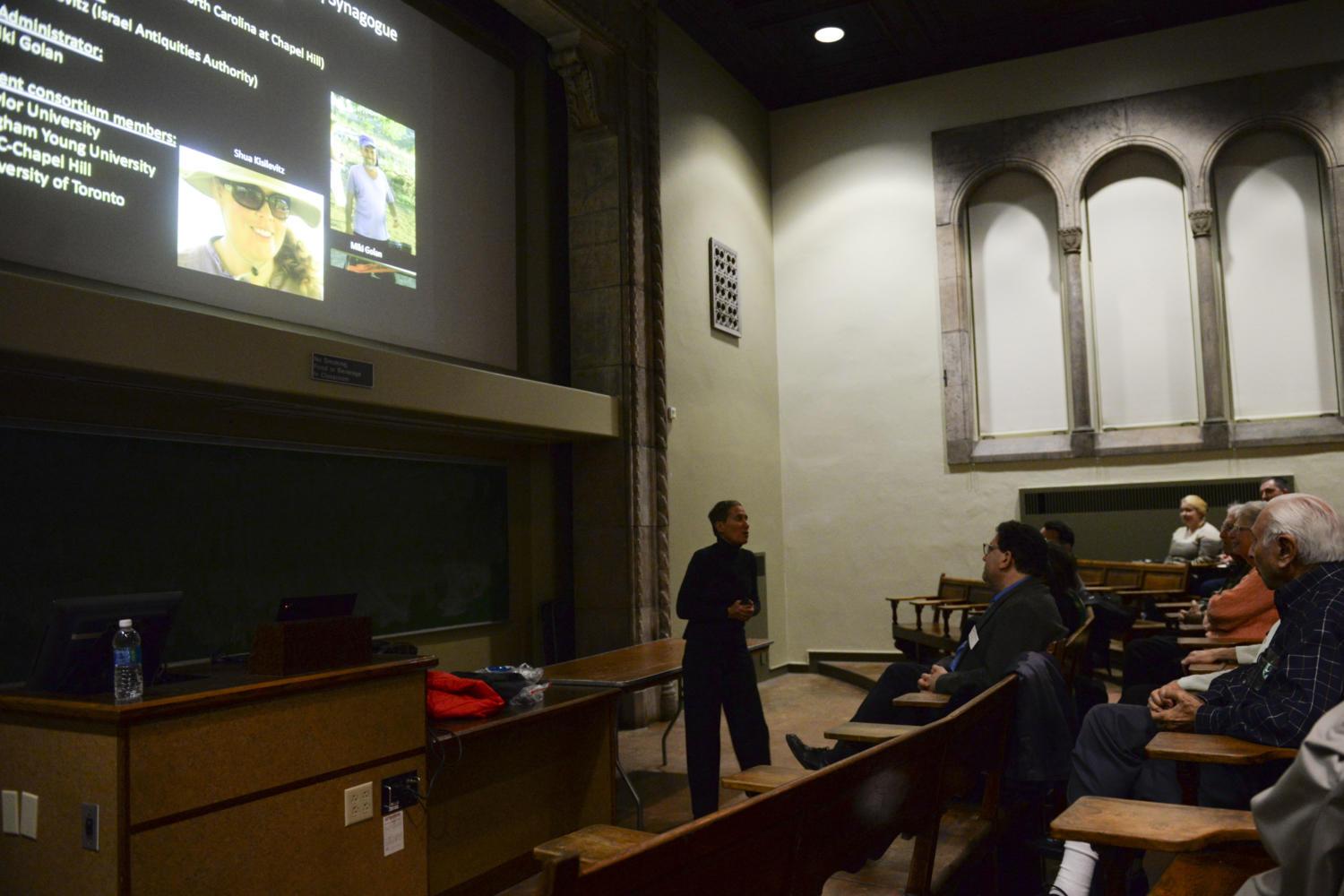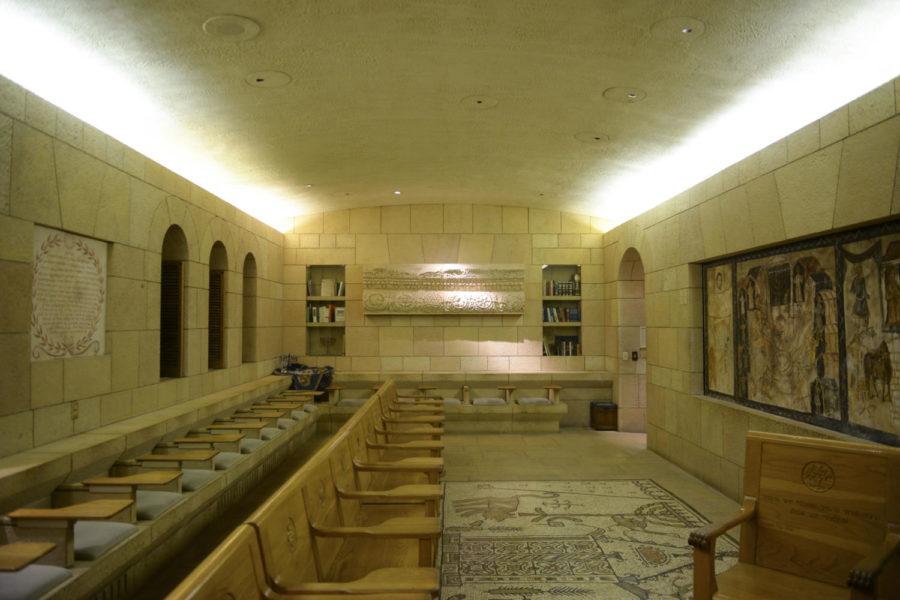Professor Jodi Magness embarked on a mission in 2011 to excavate the Huqoq synagogue in Israel with little idea of its contents — and with only an ancient village as its possible location.
Unsure of whether they would find anything, Magness’ team randomly picked a square as their first dig site and discovered archaeological fragments. Eventually, the team unearthed mosaic pavings crafted on the synagogue’s foundation depicting biblical scenes relevant to the history of Israel. Since then, Magness has been working on the excavation and preservation of the historical site in the ancient village of Huqoq, with the eventual goal of relocating the mosaics to public areas.
“I keep joking that when we finish this project they’ll be rolling me out in a wheelchair,” Magness said.
Pitt’s Jewish Studies program and Nationality Rooms program came together Monday night to host Magness and celebrate the 30th anniversary of the Israel Heritage Classroom — the 20th Nationality Room constructed in the Cathedral.
Magness — a University of North Carolina professor with a bachelor’s in archaeology and history from the Hebrew University of Jerusalem — shared the current status of the excavation site at the Late Roman-era synagogue with more than 80 people during her lecture, “More than Just Mosaics: the Huqoq Synagogue,” in the Cathedral of Learning.
Magness and her excavation team have gone out every summer digging season since 2011 and unearthed a variety of partial and complete mosaic scenes throughout the stone foundations of the Jewish synagogue.

Magness showed the audience of community members, Pitt staff and students unreleased images of the dig sites and the mosaic pavings within — including scenes depicting biblical motifs and stories such as Noah’s Ark and Helios and the Zodiac Cycle, as well as figures including Dionysus and Alexander the Great.
“I do have one regret, and that is that the actual figure of Helios was not preserved,” Magness said.
The surviving mosaics stayed preserved under dirt and stone rubble after the synagogue was abandoned due to unknown circumstances, she said. Magness and her team bury the artifacts again after each digging season.
“The only way to protect our mosaics from vandalism is to backfill them at the end of the season,” Magness said.
Russ Orme, a Pitt alumnus who had classes in the Nationality Rooms in 1933 and still occasionally visits them, was surprised to learn that these excavation sites are backfilled every year.
He also said he has been to Israel multiple times and would be interested in volunteering at a dig there in the future, which Magness’ lecture advertised as an opportunity for the public.
“I thought it’d be really neat to do a dig,” Orme said. “I’m always interested in history.”
Magness’ lecture concluded with several audience members’ questions before relocating the crowd to the Israel Heritage classroom in 337 for refreshments and informal tours of the room.
Jonathan Pearlman, the head of the Israel Heritage Room Committee, said the Israel Heritage classroom reflects the designs found in first-century Galilean architecture and contains recreations, carvings and inscriptions of significant Hebrew literature and biblical imagery. It has minimal furniture and a foundation of Jerusalem stone and floor mosaic — a replica of one in the sixth-century Galilean synagogue of Beth Alpha, depicting Jewish wildlife and culture — that dominates the hybridized architectural style.
“You go into this room and you feel like you are in an ancient Galilean classroom,” Pearlman said.
Two rows of desks line the back wall of the room, facing classroom elements including a chalkboard and a professor’s table based on one found in Jerusalem’s first-century Burnt House.
In addition to its function as a Pitt classroom, the now 30-year-old room serves as a time capsule for the Israel Heritage Room Committee Collection and features six series of materials ranging from financial records to DVDs to timesheets collected during the planning and construction of the classroom.
Dedicated Nov 1, 1987, the classroom marked the revival of the Nationality Rooms Project — started by Chancellor John Bowman in 1926 — after 30 years without construction on any rooms.
According to junior molecular biology major Jerrica Jamison — who works at the tour center and gift shop in the Cathedral of Learning — the room intentionally showcases designs and materials from several centuries of Israeli history, unlike other Nationality Rooms that take inspiration from isolated time periods, historical classroom designs or even entire continents, as with the African Heritage classroom.
Adam Shear, the director of Pitt’s Jewish Studies Program, said the post-lecture gathering served as a way to bring together Magness’ lecture and the Israel Heritage Room.
“This lecture and all of the lectures are where we bring scholars to the community and open up the doors of the University,” Shear said.


